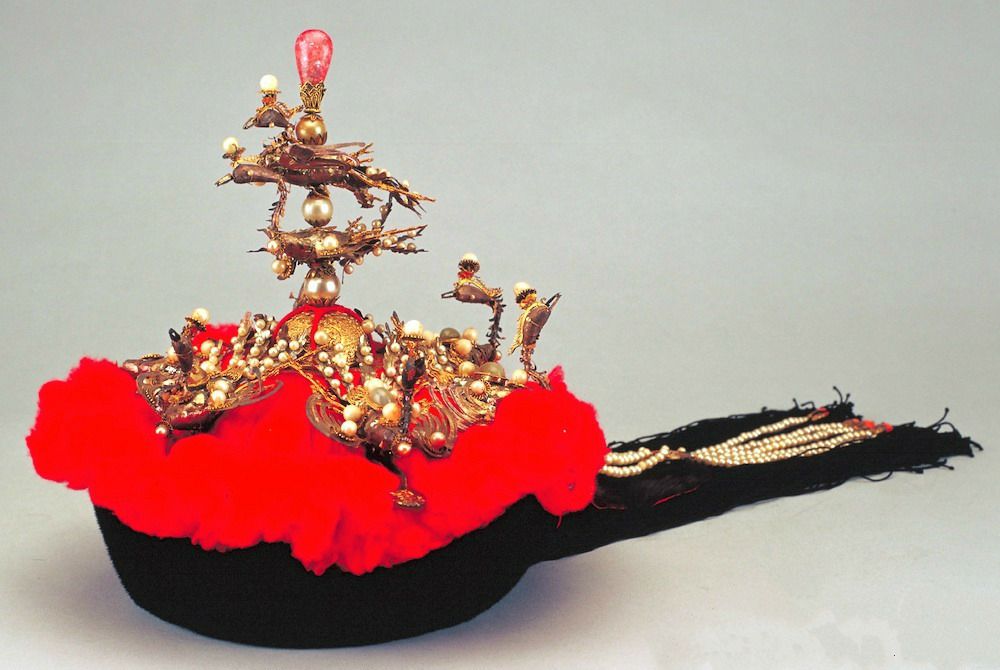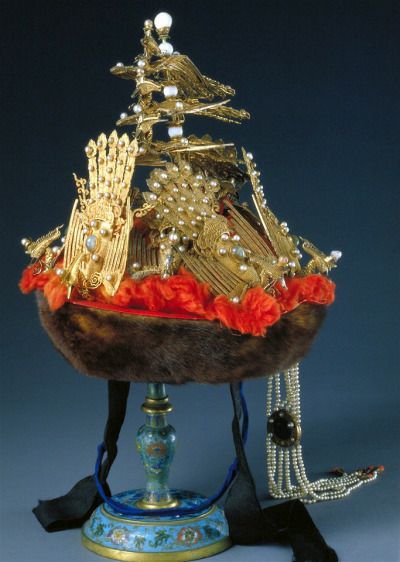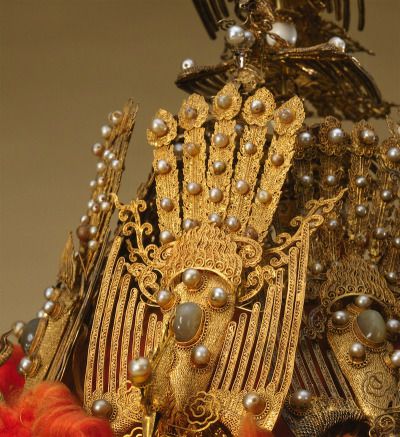Fèng guān: The Symbolic Crowns of Chinese Empresses and Princesses in the Qing and Ming Dynasties
The Phoenix Crown, also known as “Fèng guān凤冠” in Chinese, was a regal headdress worn by empresses during the Ming and Qing dynasties. These exquisite crowns are currently displayed in the Forbidden City, located in Beijing. Within the hierarchical structure of the imperial court, the first crimson crown was exclusively reserved for esteemed high-ranked imperial concubines referred to as “fēi妃,” and they were addressed as “huáng fēi皇妃” by the public. The second crimson crown, embellished with an abundance of gold ornaments, was a symbol of the empress’s unparalleled status as the sole wife of the emperor, recognized by ancient laws. She was honored with the title of “hòu后” and commonly referred to as “huáng hòu皇后” by the people. The term “huáng皇” embodies the essence of royalty and imperial power.
However, it is noteworthy that the title of “fēi妃” also extended to the wives of princes, who held a lower rank compared to the empress or “huáng hòu皇后.” For instance, the wife of a prince was known as “wáng fēi王妃,” and if the prince held the esteemed position of “tài zǐ太子” (crown prince), his wife would be addressed as “tài zǐ fēi太子妃.”
In the English language, the wife of a prince is commonly referred to as a princess, similar to the daughter of an emperor. However, in the Chinese context, the wife of a prince and the daughter of an emperor do not share the same title. In ancient China, the daughter of an emperor usually held a higher status than the wife of a prince, as the latter might not possess royal lineage. The daughter of an emperor was known as “huáng nǚ皇女,” a direct translation meaning “imperial/royal daughter.” If the emperor bestowed exceptional favor upon her or her mother held the title of empress, she might be granted the distinguished title of “gōng zhǔ公主” by the emperor himself. Consequently, not every “huáng nǚ皇女” could be addressed as “gōng zhǔ公主.” Moreover, within the “gōng zhǔ公主” title, there were variations such as “dà gōng zhǔ大公主” (most noble daughter of the emperor), “zhǎng gōng zhǔ长公主” (most noble sister of the emperor), and “dà zhǎng gōng zhǔ大长公主” (most noble sister of the emperor’s father, his aunt). These titles further emphasized the hierarchical distinctions within the imperial family.
Hits: 1











